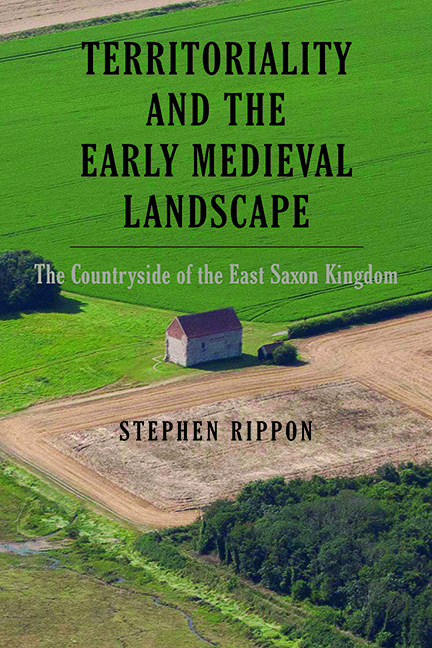Book contents
- Frontmatter
- Dedication
- Contents
- List of Illustrations
- List of tables
- List of Abbreviations
- Acknowledgements
- Glossary
- Preface
- Part I Background
- Part II The Early Folk Territories
- Part III Discussion and Analysis
- Appendix 1 Domesday Population Densities Across the ‘Rochford Peninsula’ Early Folk Territory
- Appendix 2 Sites Used in the Analysis of Animal Bone Assemblages
- Appendix 3 Sites Used in the Analysis of Charred Cereal Assemblages
- Bibliography
- Index
- Garden and Landscape History
Appendix 1 - Domesday Population Densities Across the ‘Rochford Peninsula’ Early Folk Territory
Published online by Cambridge University Press: 26 May 2022
- Frontmatter
- Dedication
- Contents
- List of Illustrations
- List of tables
- List of Abbreviations
- Acknowledgements
- Glossary
- Preface
- Part I Background
- Part II The Early Folk Territories
- Part III Discussion and Analysis
- Appendix 1 Domesday Population Densities Across the ‘Rochford Peninsula’ Early Folk Territory
- Appendix 2 Sites Used in the Analysis of Animal Bone Assemblages
- Appendix 3 Sites Used in the Analysis of Charred Cereal Assemblages
- Bibliography
- Index
- Garden and Landscape History
Summary
A PROBLEM WITH THE Domesday Geography population density maps is that they often group the data by Hundreds, which straddled very diverse geologies and topographies (e.g. Essex and Suffolk: Darby 1952; Middlesex: Campbell 1962b), although in some cases data is mapped according to subdivisions of the landscape that were related to topography (e.g. Hertfordshire: Campbell 1962a). A more detailed analysis of Domesday population density data is given in the table below. The case study area – the Rochford Peninsula early folk territory (see Chapter 4) – was chosen as is has a relatively simple two-fold division in its geology and topography, with relatively light and fertile soils in the low-lying east and poorer soils on the Rayleigh Hills in the west. The landowner and occupier are not included in the head-count as they were almost certainly non-resident, although where a freeman is listed as holding a manor they are counted as one (as they were presumably resident). There were, however, various places where the Domesday manors and vills were clearly not co-terminus with the later parishes: Sutton, for example, has the extraordinarily high population density of 30 per square mile and so the Domesday vill must have been more extensive than the later parish, while for Ashingdon (also in the fertile eastern lowlands) the population figure of one per square mile is implausibly low. Rayleigh comprised two Domesday vills, of which one (Rayleigh) lay on the Rayleigh Hills, while the other (Wheatley) was predominantly down in the lowlands to the west: a rough estimate of their relative areas can be made based upon their hide assessment, but Rayleigh's population density of 15 per square mile is still extremely high, perhaps because it had some central place functions (it was the site of a castle, park and vineyard: DB Ess 24,17). Anomalies such as these are, however, smoothed when the data is averaged over larger areas, and it does appear that the Rayleigh Hills had a lower population density than the lowlands (even lower if Rayleigh's figure is inflated by it having central place functions).
- Type
- Chapter
- Information
- Territoriality and the Early Medieval LandscapeThe Countryside of the East Saxon Kingdom, pp. 295 - 297Publisher: Boydell & BrewerPrint publication year: 2022



